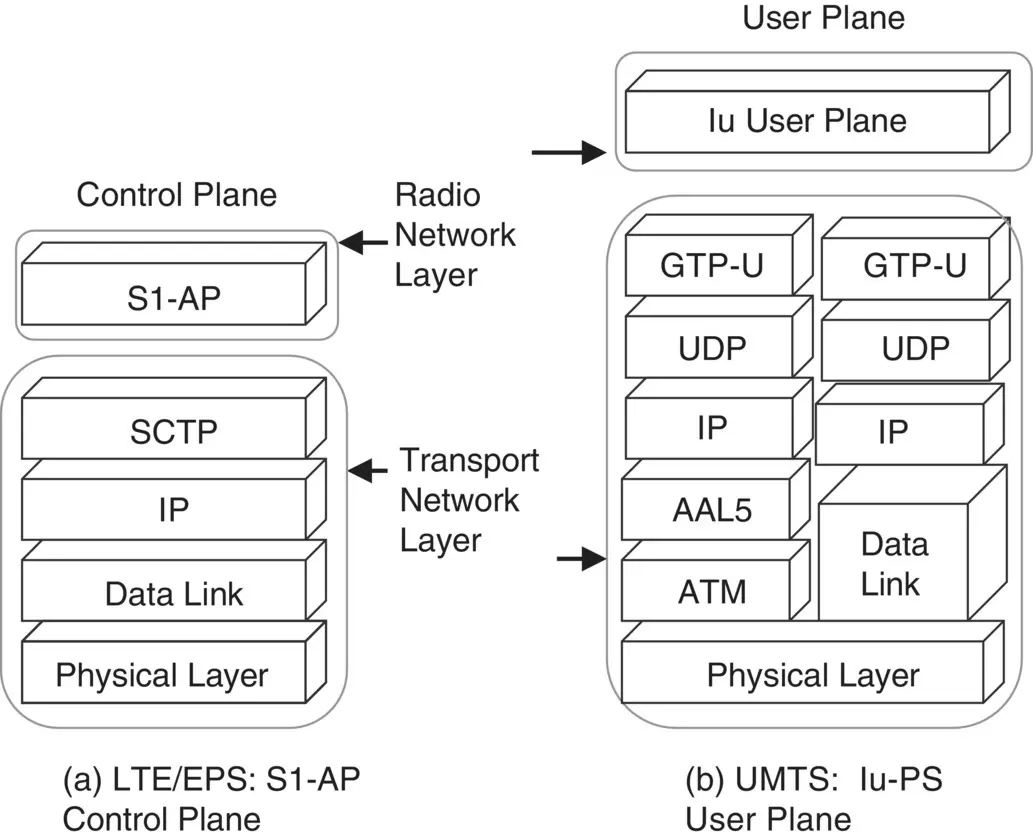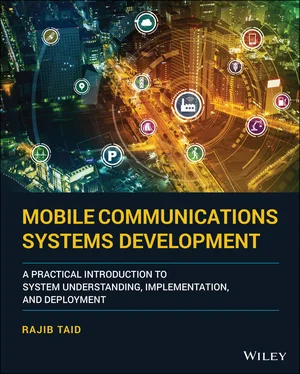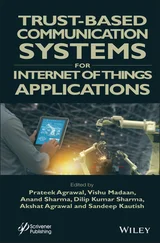3.9 General Protocol Model Between RAN and CN (UMTS, LTE, 5G)
In Section 3.2, we have discussed the separation of protocol layers of various logical interfaces into a control plane and user plane categories which are applicable, in general, in all the mobile communications systems, i.e. GSM, GPRS, UMTS, LTE and 5G. In Section 3.3, we have also discussed the grouping of UMTS, LTE, and 5G systems only protocol layers into AS and NAS categories from the protocol layer termination at UMTS UTRAN, LTE E‐UTRAN, 5G NG‐RAN, and CN point of view.
The grouping of protocol layers into the AS and NAS layers in the UMTS, LTE, and 5G systems is done from their respective air interface point of view, where the air interface is the physical interface. On the other hand, the UMTS UTRAN, LTE E‐UTRAN, and 5G NG‐RAN communicate with their CN elements and another network element of a UTRAN, E‐UTRAN, and 5G NG‐RAN using the standard data transport network, e.g. ATM, IP, which is the standard protocol. It may be noted that the protocol stack and its logical interface between UMTS UTRAN and its CN; LTE E‐UTRAN and its CN; and 5G NG‐RAN and its CN are logically independent of the underlying data transport network used by them. Based on this, the protocol stack of a logical interface, i.e. Iu interface between UMTS UTRAN – CN; S1, X2 interface between E‐UTRAN and MME or E‐UTRAN; NG interface between 5G NG‐RAN and 5G core, is further modeled with the following horizontal‐layered structures:
Radio Network Layer (RNL)
Transport Network Layer (TNL)
The above protocol model of the UMTS UTRAN, LTE E‐UTRAN, and 5G NG‐RAN is illustrated in Figure 3.18. For more information on these layered structures, refer to UMTS TS 25.401 [51], LTE TS 36.401 [95], 5G TS 38.401 [117], and TS 38.410 [118].

Figure 3.18 Illustration: general protocol layer model of UTRAN, E‐UTRAN, and 5G NG‐RAN.

Figure 3.19 Illustration: general protocol layer model of UTRAN and E‐UTRAN.
The RNL deals with the UTRAN or E‐UTRAN or 5G NG‐RAN‐specific related various functions and procedures, for example, radio bearer management, paging, and so on, in terms of an AP. The data TNL deals with the particular transport method, e.g. ATM, IP, and so on, and possibly through the intermediate network also, to be used to transport RNL procedures messages.
RNL and TNL layers are logically independent of each other, which makes it possible to make UMTS UTRAN or LTE E‐UTRAN or 5G NG‐RAN protocol‐related changes in the RNL without affecting the TNL. As shown in Figure 3.18, the protocol layers of the logical interfaces between the UMTS UTRAN or LTE E‐UTRAN or 5G NG‐RAN and their respective CN or other network element are still separated as the control plane and user plane, but they share the same physical layer. Figure 3.19shows a side‐by‐side RNL and TNL of the LTE/EPS S1‐AP control plane between LTE eNodeB and MME, and UMTS Iu‐PS user plane protocols between RNC and SGSN.
3.10 Multiple Transport Networks, Protocols, and Physical Layer Interfaces
From the illustration shown in Figures 3.5and 3.19, it has been observed that each of the concerned protocol stacks between the GSM BSS and its CN or the UMTS RNC and its CN has the following characteristics, i.e. multiple transport and data link networks, as described in Examples 3.12to 3.13.
Provisions for multiple Data Link layers
Example 3.12/ Figure 3.20illustrates the data link layers used for the UMTS Iu‐interface. The Iu‐interface transport network options are used to exchange the control plane and user place messages of both the Iu‐CS and Iu‐PS interfaces.
Provisions for Separate Transport Protocol in an IP Transport Network
In the case of UMTS, LTE, or 5G system, if the IP transport network option is used, the IP network transport protocol layers used are listed in Table 3.8.
SCTP [17] transport network is also used for different logical interfaces in the 5G system.
Example 3.12Multiple Transport Networks for UMTS Iu Interface
The UMTS Iu‐interface is divided into two parts: Iu‐CS, to support the CS domain, and Iu‐PS, to support the PS domain. The Iu‐interface may use the ATM or IP‐based transport network as the data link layer protocol, as illustrated in Figure 3.20. For more information, refer to TS 25.412 [53].

Figure 3.20 Iu interface transport network: data link layers.
Table 3.8 Protocol layer in UMTS (Iu), LTE system (S1), and 5G NG over IP.
| IP Transport Layer |
Purpose |
System/Interface |
| UDP |
To transport Iu or S1 or NG user plane information over IP |
UMTS (Iu), LTE (S1), 5G (NG) |
| SCTP [17] |
To transport Iu or S1 or NG control plane information over IP |
Provisions for Multiple Physical Layer Interfaces
Depending on the data link layer being used, the GSM BSS, UMTS RNC, and the core network element transport network may provide provisions for configuring multiple physical layer interfaces. This ensures a backup, in case one physical interface fails the other physical interface can be brought into service to continue communications services. The upper layers of a protocol stack are independent of the type of underlying data link layer and its physical interface being used to transport higher‐layer data.
Example 3.13GPRS Gb‐Interface Multiple Physical Layer Interfaces
Consider Figure 3.5illustrated earlier. As shown in that figure, the GSM BSC and the SGSN can exchange the Gb‐interface protocol stack messages using either the Frame Relay network protocol or IP network. The Sub‐Network control protocol takes care of the data link layer protocol (Frame Relay or IP) to be used by the Gb‐interface. The higher‐layer applications are independent of the sub‐Network control protocol. In case the Frame Relay protocol and its physical E1 interface go down, the IP Transport/Ethernet interface can be brought into services immediately so that the Gb‐interface is not affected and GPRS services are not down permanently.
Similarly, between the UMTS UTRAN and its CN, the Iu‐interface can be configured to use either the ATM over STM or IP transport network physical layer; refer to TS 25.412 [53].
Reason for Multiple Data Link Layer Provisions
Typical reasons to support multiple data links by a network element are as follows:
Make the higher layer(s), e.g. RNL, independent of the TNL being used for the introduction of a new transport network without affecting the application or RNL;
Create a backup transport network; and
System and application requirements, e.g. use ATM to transport multimedia contents, whereas frame relay can transport data only.
3.11 How to Identify and Understand Protocol Architectures
3GPP defines a larger number of protocol logical interfaces, starting with the alphabet “A”, stacks, and layers which are central to the interworking of a network element with another network element of mobile communications systems and networks. In this chapter, we have covered only the following logical interfaces of mobile communications networks:
Читать дальше















